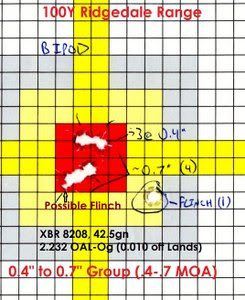Your setup?
Dutch, what's your setup?
Personally, the more I research, the more I like the all purpose .308 (target * hunting). It really comes down to shot placement and you're not going to get more accurate than a .308 for a large game caliber. I've had out of the box Savage 10FP & Rem 700SPS Tactical shoot better than .5 MOA. Working on my Savage 10 Precision to do the same but with hunting Barnes LRXs NOT match bullets. All these rifles were bought used and shoot as good as custom rifles...but the secret is finding the right handload & measuring OAL to Ogive.
I'd say keep your .308 and go with the Barnes LRX 175 (good enough for Bison - see below). If not, the 338 Federal, which is based on a .308 case, is probably the best all purpose hunting caliber that isn't known.
Nice thing with the .308 is accuracy, barrel life and range time! The more you shoot, the better you'll become and confident out in the woods.

____________________________________________________
I'm copying this from a couple different boards:
http://thefiringline.com/forums/showthread.php?t=502596
The M1A/M-14 has more than enough energy to kill any North American game, with proper distance and shot placement. BC (Canada) regs for Bison (much tougher than elk) states:
7. ammunition to hunt bison must be constructed with a 175 grain or larger bullet, which retains 2,712 joules (2,000 ft lbs) or more energy at 100 m.
http://www.env.gov.bc.ca/fw/wildlife/hunting/regulations/1214/docs/hunting_trapping_front.pdf
My 20" Savage PC .308 with Barnes 175 LRX @ 2655 fps has over 2000 ft/lbs at 200M and still has over 1100 at 600M (more than enough for deer). With over 1550 ft/lbs at 400M, a .308 is a great all around North American big game cartridge. Considering compound bow hunters are killing the largest game with 50-80ft/lbs [yeah, yeah, I know it's a little different but c'mon] I don't think there should be any problem taking elk/moose with... a .308.
______________________________________________________
http://thefiringline.com/forums/showthread.php?t=499228
My setup: (remember 20" barrel)
Savage 10 Precision Carbine (20" tapered semi-heavy barrel)
Lake City Brass
CCI BR2 Primers
IMR 8208 XBR (42.5gn)
Barnes LRX 175gn bullets
LC brass -
2652/2659 fps (ave. 2739 ft/lbs energy @ 2655 fps)
Got about 0.4-0.7" groups off a bipod, with 42.5gn XBR.
______________________________________________________
Also check the 338 Federal board:
http://thefiringline.com/forums/showthread.php?t=497949

